What Will Climate Change Mean for Island Nations?
The effects of climate change are no longer a distant concern; they are a pressing reality, especially for island nations. These small, often remote territories are on the frontline of climate-related challenges, facing a barrage of environmental, economic, and social impacts. Imagine living on a beautiful island, surrounded by crystal-clear waters and vibrant coral reefs, only to see your home slowly erode away due to rising sea levels. It's not just a nightmare scenario; it's a potential future for many island communities. As we delve into the implications of climate change, we must acknowledge that these nations are not just victims of circumstance but also potential leaders in innovative adaptation strategies.
Island nations, characterized by their unique geography and ecosystems, are particularly vulnerable to the changes brought about by climate change. With rising sea levels threatening to submerge coastlines, increased storm intensity wreaking havoc on infrastructure, and coral reefs deteriorating at alarming rates, the environmental impacts are profound. These changes not only threaten biodiversity but also the very essence of island life. The question arises: how can these nations preserve their natural beauty while adapting to the new realities of climate change?
Economically, the stakes are equally high. Island nations often rely heavily on tourism, fisheries, and agriculture, sectors that are now at risk due to climate change. For instance, tourists flock to these islands for their stunning landscapes and rich marine life, but what happens when those attractions are compromised? Similarly, fish populations are dwindling as ocean temperatures rise and habitats are altered, threatening food security and livelihoods. The challenges are daunting, but they also present opportunities for innovation and resilience.
As we explore the multifaceted impacts of climate change on island nations, it's crucial to consider not only the immediate effects but also the long-term implications. The social fabric of these communities is being tested, with displacement and loss of cultural heritage becoming increasingly common. This leads us to the pressing need for comprehensive strategies that address not just environmental and economic factors, but also the social dynamics at play. In the face of these challenges, island nations have the potential to emerge as pioneers in sustainable practices and community resilience.
- What are the main environmental challenges faced by island nations?
Island nations face rising sea levels, increased storm intensity, and coral reef degradation, all of which threaten their ecosystems and biodiversity. - How does climate change affect the economy of island nations?
Climate change impacts vital sectors such as tourism, fisheries, and agriculture, leading to economic instability and threatening livelihoods. - What are some adaptation strategies being explored by island nations?
Island nations are implementing sustainable development practices, engaging local communities, and leveraging innovative technologies to mitigate climate change impacts. - How does climate change affect the social dynamics of island communities?
Climate change can lead to displacement, loss of cultural heritage, and increased health risks, necessitating comprehensive community support and resilience strategies.

Environmental Impacts
Island nations are often seen as tropical paradises, but the reality of climate change is casting a dark shadow over these beautiful landscapes. Rising sea levels, increased storm intensity, and coral reef degradation are just a few of the environmental challenges that threaten not only the ecosystems but also the very existence of these nations. Imagine waking up one day to find that your home is now partially submerged due to rising tides; this is a reality many islanders are beginning to face.
One of the most pressing concerns is rising sea levels. According to scientific projections, some island nations could see sea levels rise by as much as 1 meter by the end of the century. This phenomenon is primarily driven by the melting of polar ice caps and the thermal expansion of seawater as it warms. The implications are staggering:
| Impact | Description |
|---|---|
| Loss of Land | Coastal erosion and flooding can lead to the permanent loss of habitable land. |
| Saltwater Intrusion | Rising sea levels can contaminate freshwater sources, affecting drinking water supply. |
| Threatened Biodiversity | Unique flora and fauna may face extinction due to habitat loss. |
Additionally, the intensity of storms is on the rise, leading to more frequent and severe weather events. These storms can wreak havoc on infrastructure, agriculture, and the natural environment. Island nations often lack the robust infrastructure found in larger countries, making them particularly vulnerable to the devastating effects of hurricanes and typhoons. The aftermath can leave communities reeling, as they struggle to rebuild their lives and homes.
Another critical environmental concern is the degradation of coral reefs, which are vital to the health of marine ecosystems. Rising ocean temperatures and increased acidity from carbon dioxide absorption are leading to coral bleaching, a phenomenon where corals lose their color and, ultimately, their ability to support marine life. This not only affects biodiversity but also the livelihoods of local communities that depend on fishing and tourism. As coral reefs decline, the natural barriers they provide against storm surges are also diminished, putting coastal communities at even greater risk.
In summary, the environmental impacts of climate change on island nations are profound and multifaceted. From rising sea levels threatening to swallow entire communities to the degradation of vital ecosystems like coral reefs, the challenges are immense. The question remains: how can these nations adapt and thrive in the face of such overwhelming odds? The answer lies in a combination of local knowledge, innovative solutions, and global support.
- What are the main environmental challenges faced by island nations due to climate change?
Island nations face rising sea levels, increased storm intensity, and coral reef degradation. - How does rising sea level affect freshwater supplies?
Rising sea levels can lead to saltwater intrusion, contaminating freshwater sources. - Why are coral reefs important to island nations?
Coral reefs support marine biodiversity and protect coastlines from storm surges.
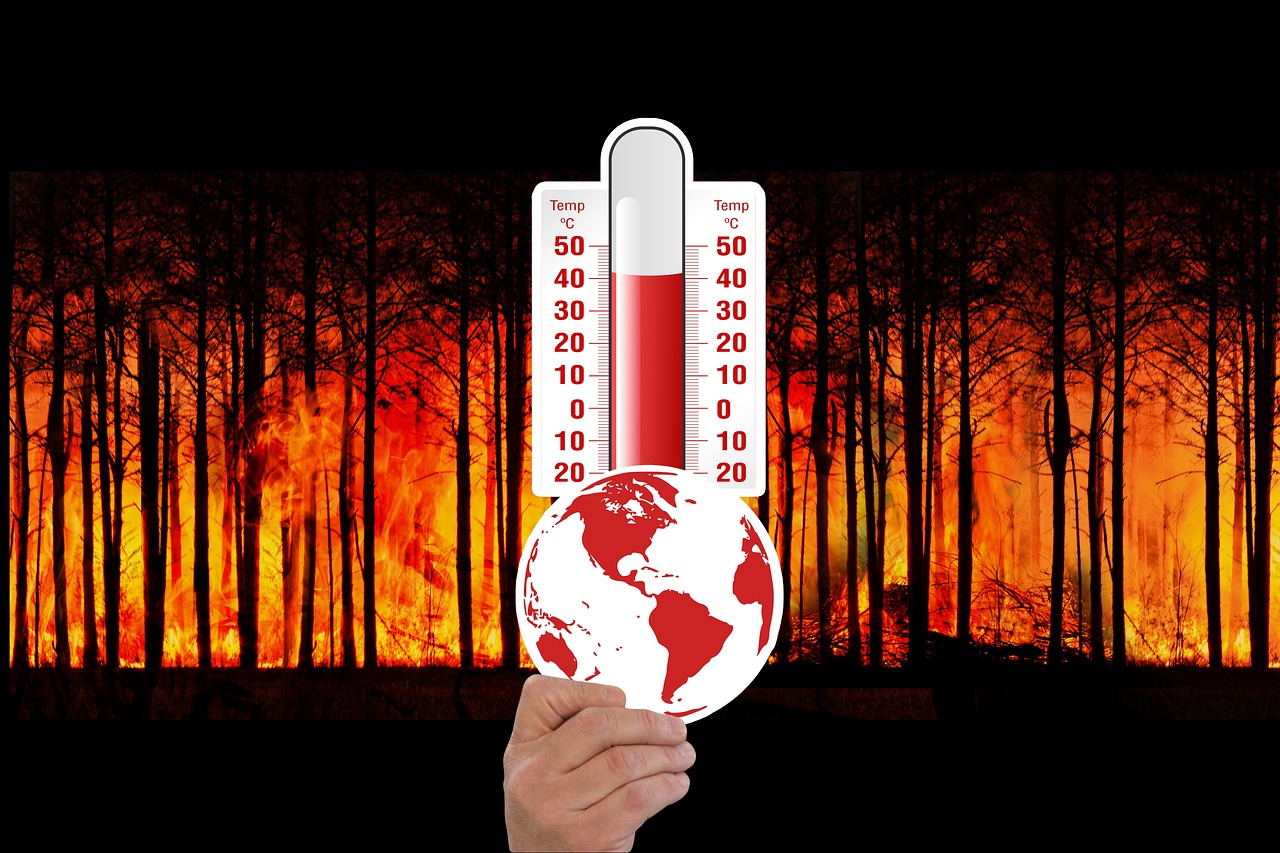
Economic Consequences
The economic stability of island nations is increasingly under threat due to the far-reaching effects of climate change. As these regions often rely heavily on a few key industries, the impacts can be particularly devastating. For instance, tourism, fisheries, and agriculture are not just vital sources of income; they are the lifeblood of many communities. When you think about it, these sectors are like the delicate threads of a tapestry, woven together to create a vibrant economic landscape. However, climate change is fraying these threads, leading to a potentially catastrophic unraveling.
One of the most significant challenges is the vulnerability of the tourism sector. Island nations often boast stunning natural landscapes and unique ecosystems that attract millions of visitors each year. But as climate change leads to more extreme weather events, such as hurricanes and rising sea levels, the very attractions that draw tourists can be severely impacted. Imagine a beautiful beach, a picturesque coral reef, or a lush rainforest—now picture them disappearing or being damaged beyond recognition. This scenario is not just a possibility; it’s becoming a reality for many island destinations.
Tourism is a key economic driver for many island nations, but climate change poses risks through extreme weather events and loss of natural attractions. The potential for natural disasters can deter tourists, leading to significant drops in revenue. As a result, local businesses that depend on tourist spending, such as hotels, restaurants, and tour operators, may face dire consequences. Moreover, the loss of natural beauty can lead to a long-term decline in visitor numbers, making recovery even more challenging.
Extreme weather events can lead to significant infrastructure damage, impacting transportation, utilities, and housing, which are critical for sustaining tourism and local economies. For example, after a hurricane, roads may be washed away, power lines downed, and buildings destroyed. This not only disrupts the daily lives of residents but also makes it difficult for tourists to visit. The economic ramifications can be staggering, leading to prolonged periods of financial instability.
Rising risks from climate-related disasters may lead to higher insurance premiums or unavailability of coverage, further straining the economic resources of island nations. Insurers are increasingly wary of the potential costs associated with insuring properties in high-risk areas, which can make it more difficult for businesses and homeowners to obtain necessary protection. This creates a vicious cycle where the inability to secure insurance leads to increased vulnerability, further exacerbating economic instability.
Climate change affects fish populations and agricultural productivity, threatening food security and the livelihoods of communities reliant on these sectors for sustenance and income. Warmer ocean temperatures can lead to shifts in fish migration patterns, making it harder for local fishermen to catch the species they rely on. Similarly, changing weather patterns can result in unpredictable rainfall and droughts, severely impacting crop yields. This not only threatens food security but also places immense pressure on the local economy, as families struggle to make ends meet.
| Sector | Impact of Climate Change | Potential Consequences |
|---|---|---|
| Tourism | Extreme weather events, loss of natural attractions | Reduced visitor numbers, economic downturn |
| Fisheries | Shifts in fish populations, overfishing | Loss of income, food insecurity |
| Agriculture | Changing weather patterns, droughts | Crop failures, increased food prices |
In summary, the economic consequences of climate change for island nations are profound and multifaceted. From the immediate impacts on tourism and infrastructure to the long-term threats to fisheries and agriculture, the challenges are daunting. However, recognizing these issues is the first step toward finding solutions. By prioritizing adaptation strategies and sustainable practices, island nations can work to mitigate these economic challenges and build a more resilient future.
- What are the primary economic sectors affected by climate change in island nations? The primary sectors include tourism, fisheries, and agriculture, all of which are vital for the economies of these regions.
- How does climate change impact tourism in island nations? Climate change leads to extreme weather events and loss of natural attractions, which can deter tourists and result in significant economic losses.
- What strategies can island nations adopt to mitigate economic impacts? Implementing sustainable development practices, engaging local communities, and enhancing infrastructure resilience are key strategies.
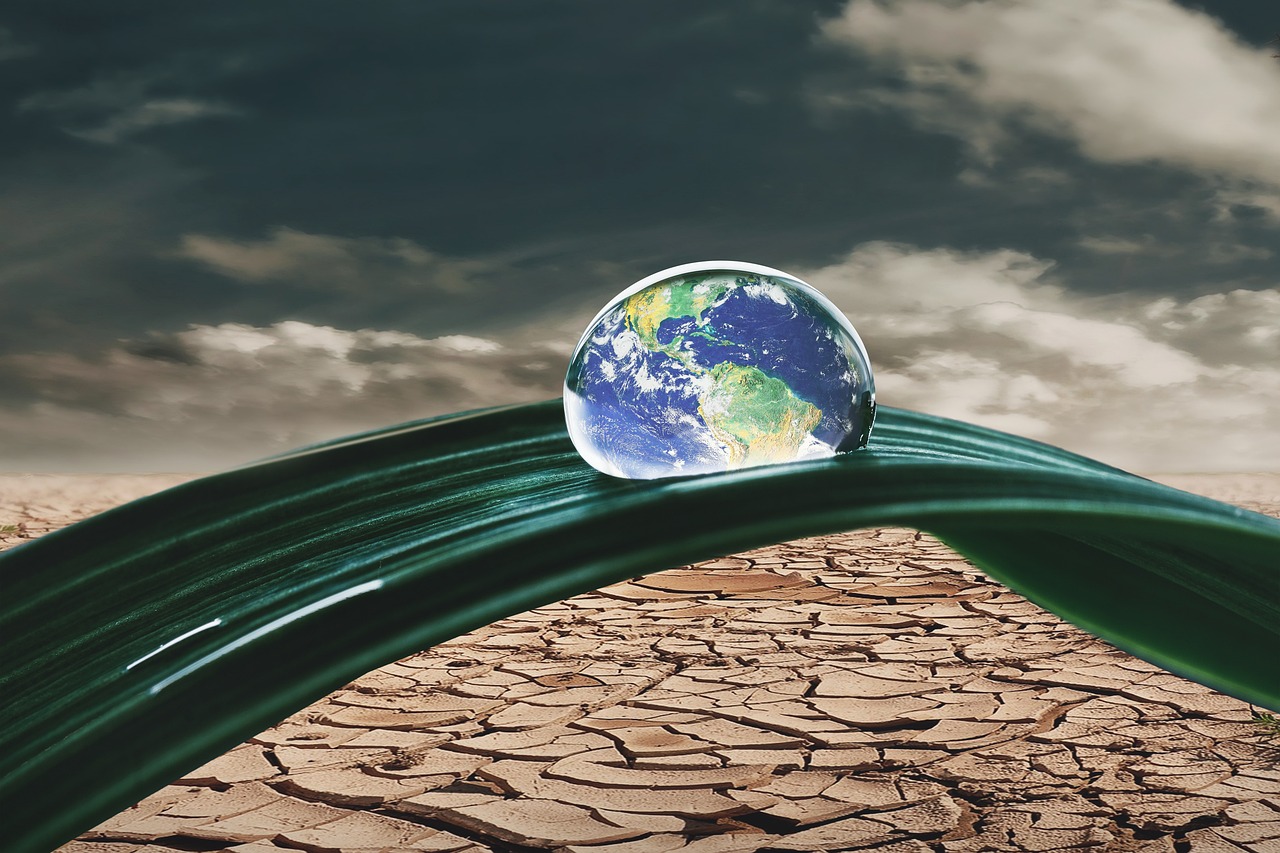
Tourism Vulnerability
Tourism is often hailed as the lifeblood of many island nations, providing essential revenue and employment opportunities for local communities. However, the increasing threat of climate change is putting this vital sector in jeopardy. Imagine waking up in a paradise where the sun shines brightly, the waves lap gently at the shore, and the vibrant coral reefs teem with life. Now, picture that same paradise facing the wrath of extreme weather events, rising sea levels, and fading natural beauty. It’s a stark contrast that raises serious questions about the future of tourism in these vulnerable regions.
Extreme weather events, such as hurricanes and typhoons, are becoming more frequent and severe due to climate change. These natural disasters not only pose immediate risks to the safety of tourists and residents but also lead to long-term damage to infrastructure. For instance, a single storm can destroy roads, airports, and hotels, crippling the tourism industry for months or even years. The economic ripple effect can be devastating, affecting not just the tourism sector but also local businesses that rely on visitor spending.
Moreover, the loss of natural attractions is a significant concern. Coral reefs, which are often the main draw for divers and snorkelers, are suffering from bleaching due to rising ocean temperatures. This degradation not only affects marine biodiversity but also diminishes the aesthetic appeal of these destinations. As the underwater world changes, so too does the experience for tourists, leading to a potential decline in visitor numbers. The question arises: how can island nations adapt to preserve their unique offerings?
To combat these vulnerabilities, island nations must prioritize urgent planning and investment in sustainable tourism practices. This includes diversifying the tourism portfolio to reduce dependence on any single attraction or activity. For instance, promoting eco-tourism and cultural tourism can help mitigate the risks associated with climate change. By highlighting the rich cultural heritage and natural beauty of these islands, nations can attract a broader range of visitors, ensuring economic stability even in the face of environmental challenges.
Additionally, collaboration with international organizations and stakeholders is crucial. By sharing knowledge and resources, island nations can develop comprehensive strategies to enhance resilience against climate change. This might involve implementing early warning systems for extreme weather events, investing in infrastructure that can withstand climate impacts, and promoting community-led conservation initiatives. In doing so, they not only safeguard their tourism sector but also strengthen their overall economic and social fabric.
In conclusion, the vulnerability of tourism in island nations due to climate change is a pressing issue that requires immediate attention. By recognizing the risks and taking proactive measures, these nations can work towards a sustainable future where tourism continues to thrive, even amidst the challenges posed by a changing climate. The journey ahead may be fraught with difficulties, but with determination and innovation, island nations can navigate these turbulent waters.
- How does climate change specifically affect tourism in island nations? Climate change leads to extreme weather events, rising sea levels, and environmental degradation, which can deter tourists and damage infrastructure.
- What are some strategies island nations can use to protect their tourism industries? Strategies include diversifying tourism offerings, investing in sustainable practices, and enhancing community engagement in decision-making.
- Why is eco-tourism important for island nations? Eco-tourism promotes environmental conservation and can attract visitors interested in sustainability, providing an alternative to traditional tourism that may be more vulnerable to climate impacts.

Infrastructure Damage
Extreme weather events, a direct consequence of climate change, pose a significant threat to the infrastructure of island nations. These nations, often characterized by their limited land area and resources, are particularly vulnerable to the destructive forces of nature. When hurricanes, typhoons, or severe storms strike, the damage can be catastrophic, affecting not only the physical structures but also the very essence of life on these islands.
Consider the impact of a single storm that results in flooding, wind damage, and erosion. Roads may be washed away, making transportation nearly impossible. Utilities such as water, electricity, and communication systems can be severely disrupted, leading to chaos and uncertainty. The recovery from such events can take months, if not years, and during this time, local economies suffer immensely. With tourism being a primary source of income, the loss of infrastructure can deter visitors, leading to a significant drop in revenue. This vicious cycle of destruction and economic loss creates a precarious situation for island nations.
To illustrate the potential scale of infrastructure damage, let’s take a look at a hypothetical scenario:
| Type of Infrastructure | Potential Damage from a Major Storm | Estimated Recovery Time |
|---|---|---|
| Roads and Bridges | Complete washout, requiring extensive rebuilding | 6-12 months |
| Utilities (Water, Electricity) | Severe disruption, possible complete failure | 3-6 months |
| Tourism Facilities | Destruction of hotels and attractions | 1-2 years |
This table highlights the potential damage and recovery timelines associated with infrastructure failures. Each category represents a crucial component of daily life and economic stability in island nations. The longer the recovery period, the more entrenched the economic challenges become, leading to a domino effect on the community's overall well-being.
Moreover, the financial burden of repairing and rebuilding infrastructure can be overwhelming. Island nations often lack the necessary financial resources and may rely on international aid and loans, which can lead to long-term debt and dependency. This situation raises important questions about sustainability and the need for proactive measures to enhance resilience against future climate-related disasters.
In summary, the damage to infrastructure caused by climate change is not just a physical concern; it is a multifaceted issue that impacts the economy, community stability, and overall quality of life in island nations. As the frequency and intensity of extreme weather events increase, it becomes imperative for these nations to invest in robust infrastructure and disaster preparedness strategies to safeguard their future.
- What are the main causes of infrastructure damage in island nations? Infrastructure damage is primarily caused by extreme weather events such as hurricanes, storms, and flooding, which are intensified by climate change.
- How can island nations prepare for potential infrastructure damage? Preparation can include investing in resilient infrastructure, enhancing disaster response plans, and engaging in community education about climate risks.
- What role does tourism play in the economy of island nations? Tourism is a vital economic driver for many island nations, providing jobs and revenue, but it is highly susceptible to climate-related disruptions.
- How can local communities contribute to infrastructure resilience? Local communities can engage in decision-making processes, share traditional knowledge, and advocate for sustainable development practices that enhance resilience.

Insurance Challenges
As climate change continues to wreak havoc across the globe, island nations find themselves grappling with a significant challenge: the rising costs and complexities of insurance. With the increased frequency and intensity of climate-related disasters—think hurricanes, floods, and rising sea levels—insurance companies are reassessing their risk models. This reassessment often translates into higher premiums for policyholders, which can be devastating for small island economies that are already teetering on the edge of financial instability.
Imagine trying to secure your home against the very real threat of a storm, only to find that the cost of coverage has skyrocketed beyond your means. For many island residents, this isn’t just a hypothetical scenario; it’s a harsh reality. The situation becomes even more dire when you consider that some insurers may choose to withdraw entirely from certain markets due to the perceived risk. This leaves communities vulnerable and without the safety net that insurance is supposed to provide.
Moreover, the impact of rising insurance costs extends beyond individual homeowners. It affects entire communities, as businesses struggle to afford coverage for their properties and operations. This can lead to a vicious cycle where the lack of insurance coverage stifles economic growth, discourages investment, and ultimately exacerbates the very vulnerabilities that climate change creates.
To illustrate the financial strain, consider the following table that outlines the potential impacts of climate-related disasters on insurance premiums over the next decade:
| Year | Average Premium Increase (%) | Number of Insurers in Market |
|---|---|---|
| 2023 | 10% | 15 |
| 2025 | 15% | 12 |
| 2028 | 20% | 8 |
| 2030 | 25% | 5 |
This table highlights a troubling trend: as climate risks increase, the number of insurers willing to operate in these vulnerable markets decreases, while premiums continue to climb. The implications are profound; without affordable insurance, island nations may find it increasingly difficult to recover from disasters, leading to long-term economic and social repercussions.
In conclusion, the insurance challenges posed by climate change are not just a financial issue—they are a matter of survival for many island nations. As these communities look to the future, it becomes evident that innovative solutions and collaborative efforts are essential to ensure that insurance remains accessible and affordable, even in the face of mounting climate risks.
- What factors contribute to rising insurance premiums in island nations?
Factors include increased frequency of natural disasters, higher repair and rebuilding costs, and the overall economic instability caused by climate change.
- How can island nations mitigate insurance challenges?
By investing in disaster preparedness, improving infrastructure resilience, and exploring alternative risk financing options, island nations can better manage insurance challenges.
- Are there any government initiatives to help with insurance costs?
Some governments are exploring subsidized insurance schemes and public-private partnerships to reduce the financial burden on residents.
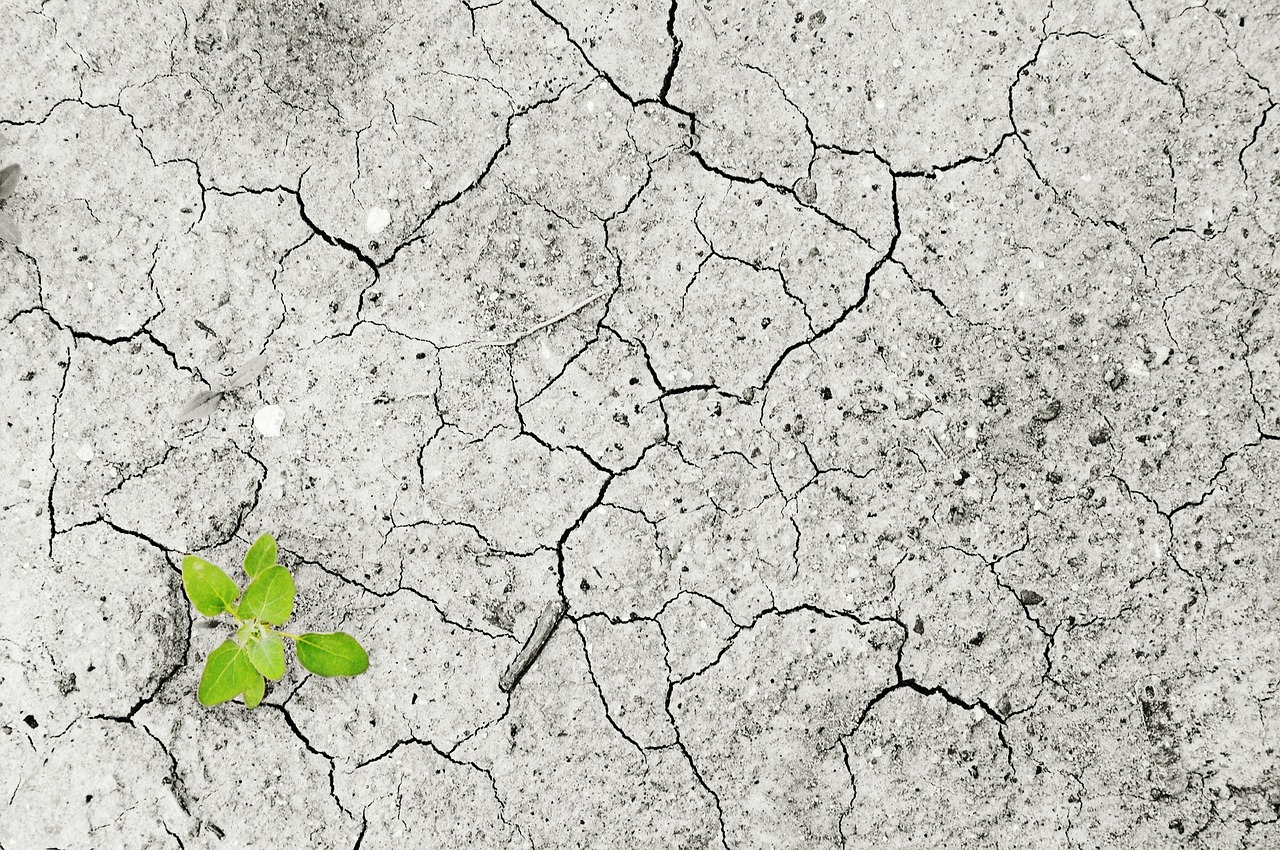
Fisheries and Agriculture
Climate change is a formidable adversary for the fisheries and agriculture sectors in island nations, threatening not only the economy but also the very essence of life for many communities. As the ocean warms and acidifies, fish populations are experiencing shifts in their habitats and spawning grounds. This disruption can lead to a decline in fish stocks, which are crucial for both local consumption and export. Imagine a fisherman who has relied on the same fishing grounds for generations suddenly finding them barren; it’s a stark reality that many face today.
Moreover, the agricultural landscape is not spared from the clutches of climate change. Increased temperatures and altered rainfall patterns can lead to droughts or flooding, severely affecting crop yields. For instance, staple crops like rice and taro, which are vital to the diets of island populations, may struggle to thrive under these changing conditions. A community that once enjoyed a bountiful harvest could find itself grappling with food insecurity, pushing families to the brink of survival.
To illustrate the potential impacts, consider the following table that highlights the effects of climate change on fisheries and agriculture:
| Sector | Impact of Climate Change | Potential Solutions |
|---|---|---|
| Fisheries | Shifts in fish populations, decreased catch rates | Implementing sustainable fishing practices, marine protected areas |
| Agriculture | Reduced crop yields, increased pest outbreaks | Adopting climate-resilient crops, improving irrigation systems |
Furthermore, local communities often depend on these sectors for their livelihoods, making the stakes even higher. When fish stocks dwindle, not only do fishermen suffer, but so do the families who rely on their catch for sustenance. Similarly, when crops fail, it is the farmers and their families who bear the brunt of food shortages. This interconnectedness highlights the urgency of addressing climate change's impact on these critical sectors.
In response to these challenges, island nations are beginning to adopt innovative practices to bolster resilience in fisheries and agriculture. For instance, aquaculture is gaining traction as a sustainable alternative to wild fishing, allowing communities to cultivate fish in controlled environments. On the agricultural front, there is a growing emphasis on permaculture and agroforestry, which promote biodiversity and soil health, ensuring that food production can continue even in the face of climate challenges.
Ultimately, the path forward requires a concerted effort from governments, communities, and international organizations to develop strategies that not only mitigate the effects of climate change but also empower local populations. By fostering resilience in fisheries and agriculture, island nations can safeguard their food security and economic stability, ensuring that future generations can thrive in harmony with their environment.
- What are the main effects of climate change on fisheries? Climate change leads to shifts in fish populations, changes in spawning grounds, and overall decreased catch rates due to warmer and more acidic oceans.
- How does climate change impact agriculture in island nations? Increased temperatures and altered rainfall patterns can result in droughts or flooding, severely affecting crop yields and leading to food insecurity.
- What solutions are being implemented to address these challenges? Solutions include sustainable fishing practices, aquaculture, climate-resilient crops, and improved irrigation systems.
- How can local communities become more resilient? Engaging local communities in decision-making processes, promoting sustainable practices, and harnessing local knowledge are key to building resilience.
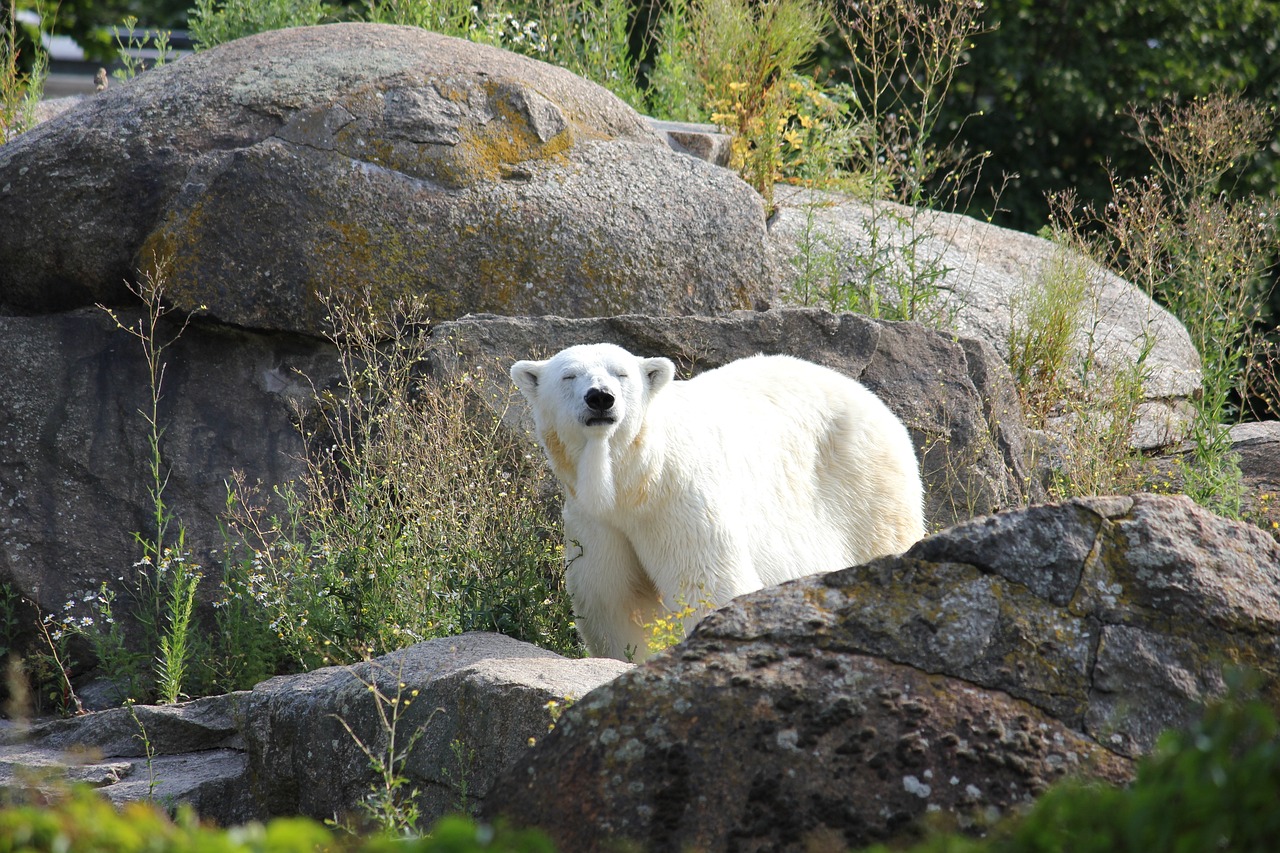
Social Impacts
Climate change is not just an environmental issue; it’s a profound social challenge that island nations are grappling with. As the planet warms and sea levels rise, these nations are witnessing significant shifts in their social fabric. One of the most pressing concerns is the potential for displacement and migration. Imagine waking up one day to find that your home is no longer safe due to encroaching waters or devastating storms. This reality is becoming increasingly common for many island communities. As families are forced to relocate, they face not only the loss of their homes but also the erosion of their cultural identity and heritage.
Moreover, the displacement caused by climate change can lead to a cascade of social issues, including increased tensions within communities and between nations. The need for effective migration policies becomes paramount. How do we ensure that those displaced are treated with dignity and respect? How do we preserve their cultural identities in the face of such upheaval? These questions require urgent attention from policymakers and community leaders alike.
In addition to displacement, climate change also exacerbates health risks within these vulnerable populations. As temperatures rise, island nations are seeing an uptick in heat-related illnesses. Furthermore, the changing climate creates favorable conditions for vector-borne diseases, such as malaria and dengue fever, to thrive. The healthcare systems in many island nations are already stretched thin, and the added burden of climate-related health issues can be overwhelming. It’s crucial that these nations enhance their public health strategies to protect their communities, especially the most vulnerable groups, such as children and the elderly.
To illustrate the multifaceted social impacts of climate change, consider the following table that outlines some of the key social challenges faced by island nations:
| Social Challenge | Description |
|---|---|
| Displacement | Communities forced to relocate due to rising sea levels and extreme weather events. |
| Cultural Identity Loss | Relocation leads to the erosion of cultural heritage and community ties. |
| Health Risks | Increased prevalence of heat-related illnesses and vector-borne diseases. |
| Social Tensions | Displacement can lead to conflicts over resources and housing. |
As island nations navigate these complex social impacts, it becomes clear that community engagement is vital. Local communities must be involved in decision-making processes to develop effective adaptation strategies. By harnessing local knowledge and resources, these nations can create tailored solutions that address their specific needs. Imagine a community coming together to design a sustainable coastal defense system that not only protects their homes but also strengthens their social bonds. This is the kind of resilience that can emerge when communities are empowered to take charge of their futures.
- How does climate change specifically affect island nations?
Climate change leads to rising sea levels, increased storm intensity, and degradation of ecosystems, all of which disproportionately impact island nations. - What are the main social challenges faced by island nations due to climate change?
Key challenges include displacement, loss of cultural identity, increased health risks, and social tensions. - Why is community engagement important in addressing climate change?
Community engagement ensures that local needs and knowledge are integrated into adaptation strategies, promoting resilience and social cohesion.
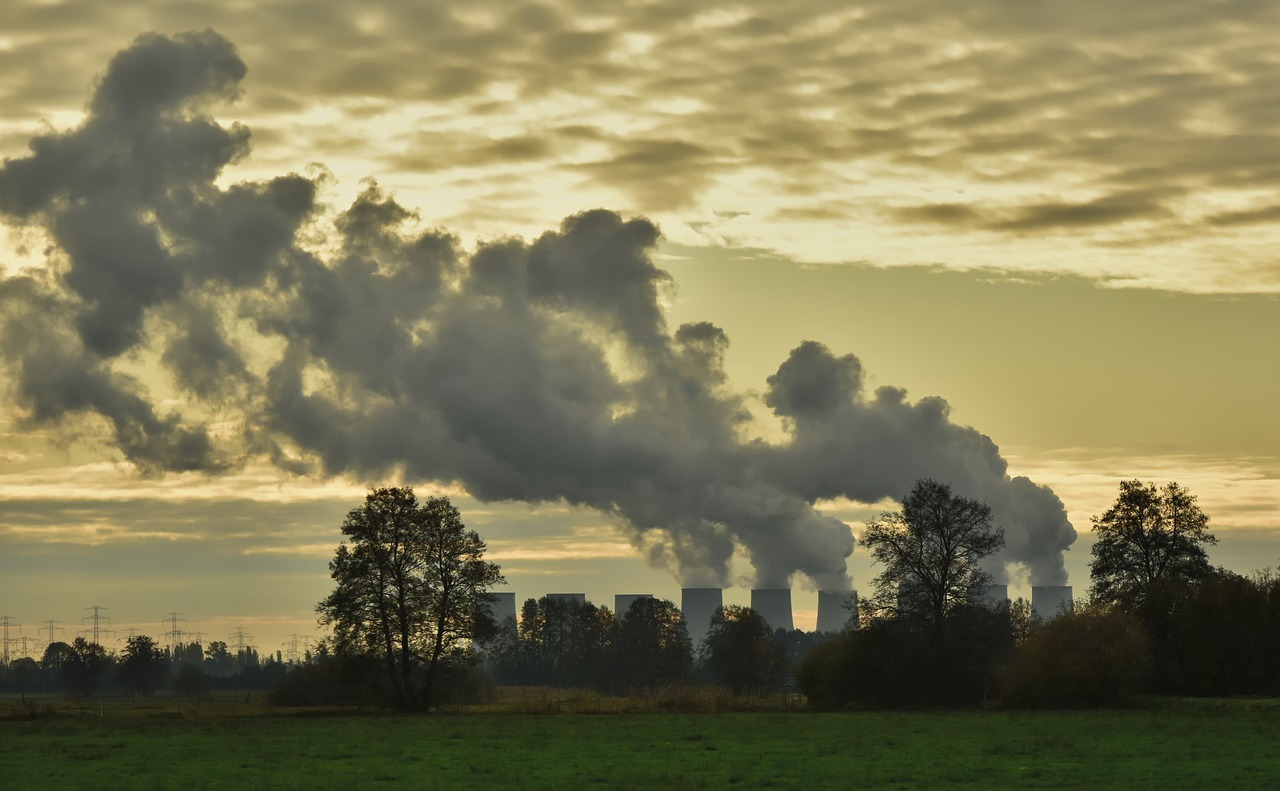
Displacement and Migration
As the impacts of climate change intensify, island nations face the harsh reality of displacement and migration. Rising sea levels are not just a distant threat; they are a current crisis that forces communities to consider leaving their homes. Imagine waking up one day to find that the beach where you grew up has receded, leaving only memories in its wake. This is the reality for many residents of island nations, where the land is slowly but surely being swallowed by the ocean.
The phenomenon of displacement due to climate change is not merely about moving from one place to another; it involves profound social and emotional upheaval. Communities that have thrived for generations may find their cultural identities at risk as they are uprooted from their ancestral lands. The loss of cultural heritage is a significant concern, as traditions, languages, and ways of life are intricately tied to specific locations. In some cases, entire communities may face the prospect of becoming climate refugees, a term that highlights the urgent need for effective migration policies.
Furthermore, the challenges of migration are multifaceted. As islanders relocate, they often encounter a host of difficulties, including:
- Integration into New Communities: Migrants may struggle to find acceptance in new areas, facing cultural barriers and discrimination.
- Access to Resources: New locations may lack the necessary resources to support incoming populations, leading to competition over jobs and housing.
- Legal and Political Hurdles: Many nations do not have clear policies regarding climate refugees, leaving migrants in a precarious legal position.
To address these pressing issues, island nations and the international community must collaborate on comprehensive migration strategies. This can include establishing legal frameworks that recognize the rights of climate-displaced individuals, as well as providing support for communities that are welcoming them. By promoting community resilience and embracing the concept of "managed retreat," we can work towards solutions that honor both the needs of displaced populations and the integrity of host communities.
Ultimately, the conversation around displacement and migration due to climate change is not just about moving people; it's about preserving lives, cultures, and futures. As we navigate this complex landscape, it’s crucial to keep the dialogue open, ensuring that the voices of those affected are heard and valued in the decision-making processes. The time to act is now, as the clock ticks down on our ability to mitigate the effects of climate change and protect vulnerable populations.
- What are the main causes of displacement in island nations? Displacement is primarily driven by rising sea levels, increased frequency of extreme weather events, and loss of livelihoods due to environmental degradation.
- How can island nations prepare for potential migration? By developing comprehensive migration policies, investing in community resilience, and fostering international cooperation, island nations can better prepare for potential migration challenges.
- What support is available for displaced communities? Various organizations and governments are working to provide legal assistance, financial support, and integration programs to help displaced communities adapt to new environments.
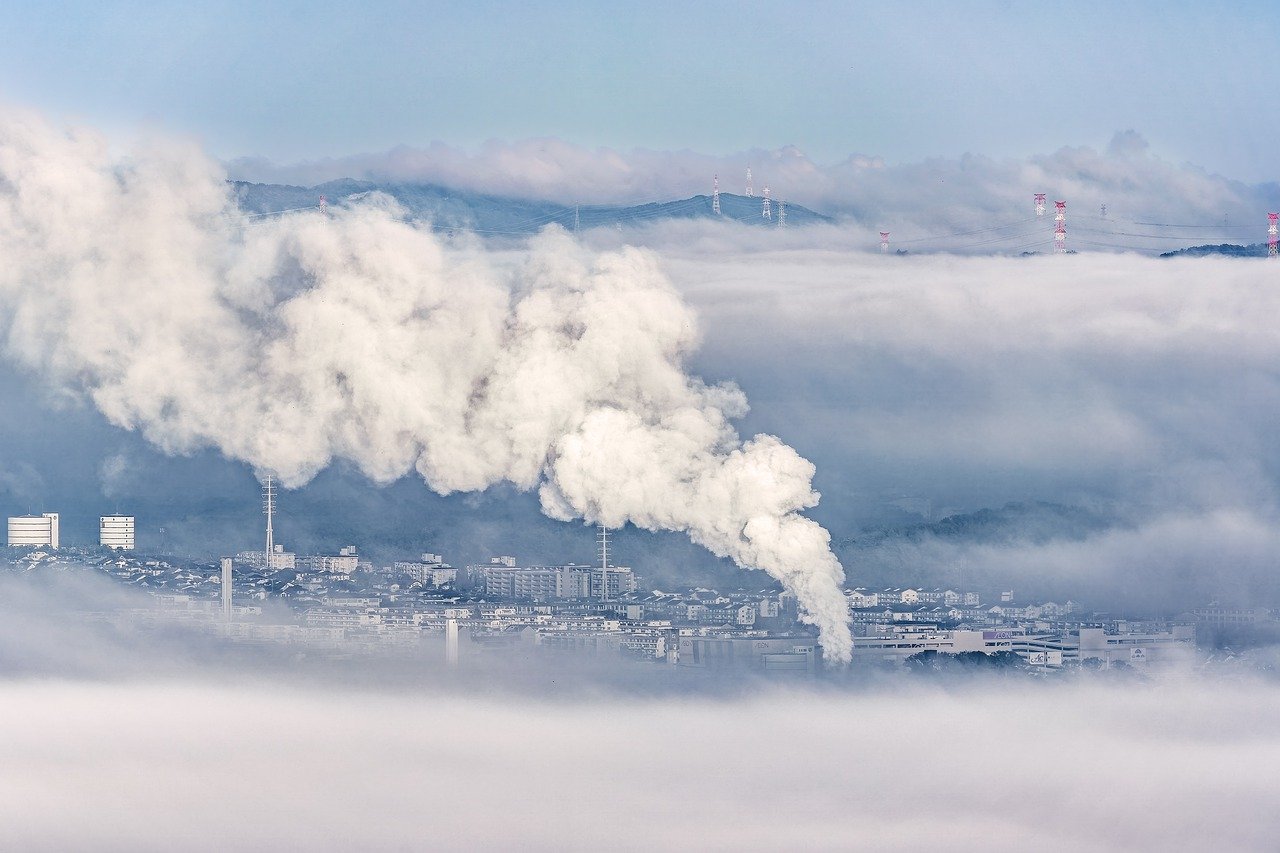
Health Risks
As climate change continues to unfold, its impacts on public health are becoming increasingly evident, particularly in island nations where the effects are often magnified. Rising temperatures, unpredictable weather patterns, and extreme weather events are not just environmental issues; they are also significant public health concerns. For instance, heatwaves are becoming more frequent and intense, leading to a rise in heat-related illnesses. Imagine living in a place where the sun feels like it’s on a mission to scorch everything in its path. That’s the reality for many island residents, especially the elderly and those with pre-existing health conditions.
Moreover, the changing climate is a breeding ground for vector-borne diseases. Mosquitoes and other disease-carrying insects thrive in warmer temperatures and increased humidity, transforming once-safe areas into hotspots for diseases like dengue fever, Zika virus, and malaria. This shift not only threatens individual health but also places an enormous burden on already strained healthcare systems. Picture a small island where the healthcare resources are limited; the sudden influx of patients suffering from preventable diseases can overwhelm local clinics and hospitals.
Additionally, the mental health of island communities is at risk as well. The stress of dealing with constant climate-related threats—such as the fear of losing homes to rising seas or the trauma of experiencing extreme weather events—can lead to anxiety, depression, and other mental health issues. In this context, the islanders are not just battling physical ailments; they are also fighting an invisible enemy that affects their emotional and psychological well-being.
To illustrate the potential health risks, consider the following table that outlines some of the major health impacts associated with climate change:
| Health Risk | Description | Potential Impact |
|---|---|---|
| Heat-related Illnesses | Increased temperatures leading to heat exhaustion and heat stroke. | Higher mortality rates, especially among vulnerable populations. |
| Vector-borne Diseases | Spread of diseases like malaria and dengue due to changing habitats. | Increased incidence of infections, straining healthcare resources. |
| Mental Health Issues | Stress and anxiety from climate-related disasters and displacement. | Long-term psychological effects, including PTSD. |
In conclusion, the health risks posed by climate change in island nations are multifaceted and complex, requiring a comprehensive approach to public health planning and intervention. As these communities face the dual challenge of environmental degradation and health crises, the need for robust healthcare systems and effective public health policies becomes more critical than ever. Addressing these challenges is not just about saving lives; it’s about preserving the very fabric of island societies and ensuring a healthy future for generations to come.
- What are the main health risks associated with climate change in island nations?
The primary health risks include heat-related illnesses, the spread of vector-borne diseases, and mental health issues due to climate-related stress.
- How does climate change affect mental health?
Climate change can lead to increased anxiety, depression, and PTSD due to the stress of natural disasters and the uncertainty of future living conditions.
- What can be done to mitigate health risks in island nations?
Implementing robust public health policies, improving healthcare infrastructure, and engaging communities in climate adaptation strategies are crucial steps.

Adaptation Strategies
Island nations are stepping up to the plate when it comes to combating the effects of climate change. With their unique challenges, these nations are not just sitting back and watching the waves rise; they are actively exploring a variety of to mitigate the adverse impacts. One of the most effective approaches is the implementation of sustainable development practices. By focusing on preserving their natural resources while fostering economic growth, these nations can build resilience against the unpredictable forces of nature. For instance, developing eco-friendly tourism initiatives that prioritize the environment can serve dual purposes: protecting the islands’ natural beauty and providing a stable income for local communities.
Moreover, community engagement plays a pivotal role in crafting these adaptation strategies. When local populations are involved in decision-making processes, the solutions devised are often more effective and culturally relevant. This engagement can take many forms, such as workshops, public forums, or collaborative projects that harness local knowledge and resources. Imagine a fishing community coming together to develop sustainable fishing practices that not only protect their livelihoods but also preserve the marine ecosystem. Such initiatives not only empower the community but also foster a sense of ownership and responsibility toward their environment.
Technology also comes into play as island nations explore innovative solutions to combat climate change. For instance, the use of renewable energy sources, such as solar and wind power, can significantly reduce dependence on fossil fuels and lower greenhouse gas emissions. Additionally, advancements in agricultural technology can help farmers adapt to changing weather patterns, ensuring food security even in the face of climate challenges. By investing in research and development, these nations can stay one step ahead and create a sustainable future.
To illustrate the potential of these adaptation strategies, consider the following table that outlines some effective measures:
| Adaptation Strategy | Description | Benefits |
|---|---|---|
| Sustainable Tourism | Develop eco-friendly tourism initiatives that protect natural resources. | Increases revenue while preserving the environment. |
| Community Engagement | Involve local populations in decision-making processes. | Creates culturally relevant solutions and fosters community ownership. |
| Renewable Energy | Invest in solar, wind, and other renewable energy sources. | Reduces carbon footprint and dependence on fossil fuels. |
| Agricultural Innovation | Implement technology to adapt farming practices to climate change. | Ensures food security and supports local economies. |
As island nations navigate the turbulent waters of climate change, their proactive approach to adaptation will be crucial. By combining sustainable practices, community involvement, and technological innovations, they are not only preparing for the future but also setting an example for the world. The journey may be challenging, but with determination and collaboration, these nations can thrive even in the face of adversity.
- What are the main adaptation strategies for island nations?
Island nations focus on sustainable development practices, community engagement, and technological innovations to combat climate change. - Why is community engagement important in adaptation strategies?
Involving local populations ensures that solutions are culturally relevant and effective, fostering ownership and responsibility. - How does renewable energy help island nations?
Renewable energy reduces dependence on fossil fuels, lowers greenhouse gas emissions, and contributes to a sustainable future. - What role does technology play in agriculture for island nations?
Technology helps farmers adapt to changing weather patterns, ensuring food security and supporting local economies.
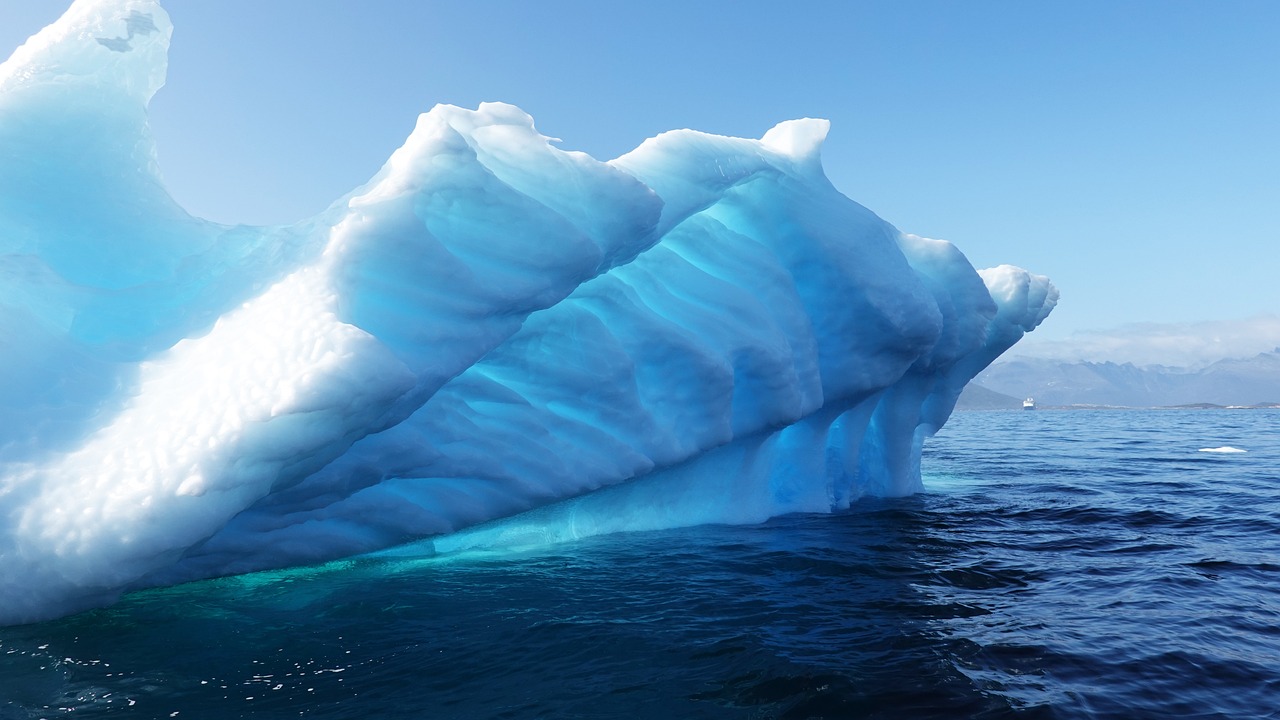
Sustainable Development Practices
Sustainable development practices are essential for island nations striving to combat the adverse effects of climate change while ensuring economic growth and social well-being. By adopting a holistic approach that balances environmental health, economic viability, and social equity, these nations can create resilient communities capable of withstanding climate-related challenges. One significant aspect of sustainable development is the integration of renewable energy sources, such as solar, wind, and hydroelectric power. By reducing dependence on fossil fuels, island nations can lower greenhouse gas emissions and promote energy independence, which is crucial for their long-term sustainability.
Furthermore, sustainable land-use planning plays a critical role in protecting fragile ecosystems. By implementing zoning regulations that prioritize conservation, island nations can safeguard vital habitats and biodiversity. For instance, creating protected marine areas not only preserves coral reefs and fish populations but also enhances the resilience of local fisheries, which are vital for food security and livelihoods. It’s like building a safety net—by ensuring that natural resources are managed wisely, communities can thrive even in the face of environmental challenges.
Another key practice is promoting agroecology, which emphasizes sustainable farming techniques that enhance soil health and biodiversity. This approach can significantly improve agricultural productivity while minimizing the environmental impact. For example, using organic farming methods and crop rotation can lead to healthier crops and a more robust ecosystem. In addition, engaging local farmers in these practices fosters a sense of community and shared responsibility, making it easier to adapt to changing climatic conditions.
Moreover, island nations are increasingly recognizing the importance of community engagement in sustainable development. By involving local populations in decision-making processes, governments can ensure that adaptation strategies are tailored to the unique needs of each community. This participatory approach not only empowers residents but also harnesses local knowledge and resources, creating a more effective response to climate change. It’s akin to building a ship with the help of everyone on board; when all hands are involved, the journey becomes smoother and more successful.
To illustrate the potential of sustainable development practices, consider the following table that outlines some key initiatives and their benefits for island nations:
| Initiative | Benefits |
|---|---|
| Renewable Energy Adoption | Reduces carbon footprint and enhances energy security |
| Protected Marine Areas | Preserves biodiversity and supports sustainable fisheries |
| Agroecology Practices | Improves food security and enhances soil health |
| Community Engagement | Empowers local populations and fosters resilience |
In conclusion, the path towards sustainable development for island nations is paved with innovative practices that not only address the immediate threats posed by climate change but also lay the groundwork for a more resilient future. By investing in renewable energy, sustainable agriculture, and community involvement, these nations can forge a way forward that honors both their unique ecosystems and the livelihoods of their people. The journey may be challenging, but with commitment and collaboration, island nations can emerge stronger and more adaptable in the face of climate change.
- What are sustainable development practices? Sustainable development practices are strategies aimed at meeting the needs of the present without compromising the ability of future generations to meet their own needs. This includes using resources responsibly, protecting the environment, and promoting social equity.
- How can island nations implement these practices? Island nations can implement sustainable development practices by adopting renewable energy sources, engaging local communities in decision-making, and prioritizing conservation efforts.
- Why is community engagement important? Community engagement is crucial because it ensures that adaptation strategies are relevant to local needs and leverages local knowledge, making initiatives more effective and sustainable.

Community Engagement
Engaging local communities in the fight against climate change is not just a good idea; it's essential. When we talk about , we're referring to the process of involving residents in decision-making that affects their lives and environments. It's about listening to their voices, understanding their needs, and utilizing their unique knowledge to create effective adaptation strategies. After all, who knows the land better than those who live on it?
One of the most significant benefits of community engagement is the promotion of local ownership of climate initiatives. When communities feel a sense of ownership, they are more likely to participate actively in the implementation of projects. This can range from coastal restoration initiatives to sustainable agricultural practices. For example, in many island nations, local fishermen have invaluable insights into fish populations and marine health, which can guide sustainable fishing practices and conservation efforts. By integrating this local knowledge, adaptation strategies can be more effective and culturally relevant.
Moreover, community engagement fosters collaboration between various stakeholders, including government agencies, NGOs, and private sectors. When these entities come together, they can pool resources, share expertise, and create comprehensive plans that address the multifaceted challenges posed by climate change. This collaboration can take many forms, such as workshops, community forums, or even social media campaigns that encourage dialogue and participation.
However, engaging communities is not without its challenges. There can be barriers such as a lack of trust in authorities, cultural differences, and varying levels of education among community members. To overcome these hurdles, it is crucial to employ inclusive approaches that ensure all voices are heard. This might involve using local languages, employing community leaders as facilitators, or conducting outreach in informal settings where residents feel more comfortable expressing their views.
Ultimately, community engagement is about creating a sense of shared responsibility for the future. It empowers individuals and groups to take action, whether through grassroots movements or larger organizational efforts. When communities are engaged, they not only contribute to climate adaptation but also strengthen their social fabric, making them more resilient in the face of challenges.
- Why is community engagement important in climate change adaptation?
Community engagement ensures that local knowledge and needs are considered in decision-making processes, leading to more effective and culturally relevant adaptation strategies. - How can communities get involved in climate initiatives?
Communities can participate through public forums, workshops, and local organizations that focus on environmental issues. Engaging with local leaders and NGOs can also provide avenues for involvement. - What are some examples of successful community engagement in island nations?
Successful examples include local fishing cooperatives working on sustainable practices, community-led coastal restoration projects, and educational programs that raise awareness about climate issues. - What challenges do communities face in engaging with climate initiatives?
Challenges can include lack of trust in authorities, cultural barriers, and varying levels of education among community members, which can hinder effective participation.
Frequently Asked Questions
- What are the main environmental impacts of climate change on island nations?
Island nations are facing significant environmental challenges due to climate change. These include rising sea levels that threaten to submerge land, increased storm intensity causing more frequent and severe weather events, and the degradation of coral reefs, which are vital for marine biodiversity and local economies.
- How does climate change affect the economy of island nations?
The economic stability of island nations is at risk from climate change, particularly in sectors like tourism, fisheries, and agriculture. Extreme weather events can damage infrastructure, disrupt tourism, and affect food security, leading to economic instability and loss of livelihoods for many communities.
- What are the social implications of climate change for island communities?
Socially, climate change can lead to displacement and migration as communities are forced to leave their homes due to rising sea levels. This not only disrupts lives but also threatens cultural identities and heritage. Additionally, health risks increase as climate change exacerbates issues like heat-related illnesses and vector-borne diseases.
- What adaptation strategies are island nations exploring?
Island nations are actively seeking adaptation strategies to combat climate change effects. These include implementing sustainable development practices that promote environmental conservation while supporting economic growth, and engaging local communities in decision-making processes to ensure that adaptation strategies are tailored to their specific needs.
- How can local communities contribute to climate change adaptation?
Local communities play a crucial role in climate change adaptation by participating in decision-making processes and sharing their unique knowledge and resources. Their involvement ensures that adaptation strategies are effective, culturally relevant, and sustainable, ultimately enhancing resilience against climate impacts.



















